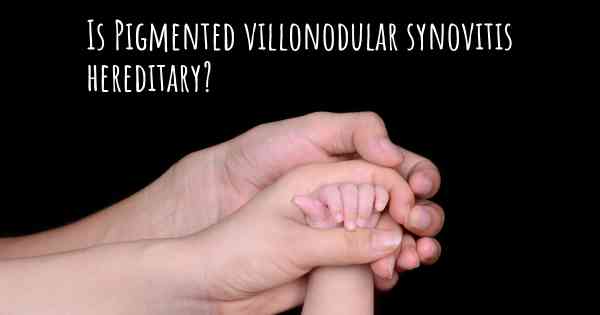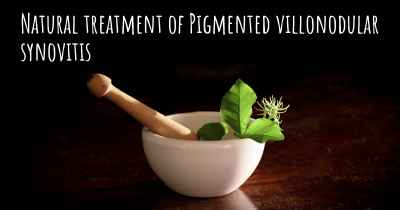Is Pigmented villonodular synovitis hereditary?
Here you can see if Pigmented villonodular synovitis can be hereditary. Do you have any genetic components? Does any member of your family have Pigmented villonodular synovitis or may be more predisposed to developing the condition?

Pigmented villonodular synovitis (PVNS) is not considered to be hereditary. It is a rare joint disorder characterized by the overgrowth of the synovium, the lining of the joint. PVNS is believed to be caused by genetic mutations or abnormalities in the affected joint, rather than being passed down through generations. Although the exact cause is unknown, it is not typically associated with hereditary factors.
Pigmented villonodular synovitis (PVNS) is a rare benign condition that affects the synovial lining of joints, tendon sheaths, and bursae. It is characterized by the overgrowth of the synovial tissue, leading to the formation of nodules or villi. PVNS can occur in any joint, but it most commonly affects the knee, followed by the hip and ankle.
The exact cause of PVNS is still not fully understood. It is believed to be an acquired condition rather than a hereditary one. Research suggests that PVNS may be caused by genetic mutations or alterations in certain genes that regulate the growth and development of synovial tissue. However, these genetic changes are not inherited from parents but rather occur spontaneously during a person's lifetime.
While PVNS is not considered hereditary, there have been rare cases where multiple family members have been affected by the condition. These instances could be due to a combination of genetic susceptibility and environmental factors. It is important to note that the overall risk of developing PVNS is still very low, even in families with multiple affected individuals.
Environmental factors may play a role in the development of PVNS. Some studies have suggested a potential link between joint trauma or injury and the onset of PVNS. It is believed that repetitive trauma or chronic inflammation in a joint may trigger the abnormal growth of synovial tissue. However, more research is needed to fully understand the relationship between environmental factors and PVNS.
Diagnosing PVNS can be challenging as its symptoms can mimic other joint conditions. Common symptoms include joint pain, swelling, stiffness, and limited range of motion. Imaging tests such as X-rays, MRI, or arthroscopy are often used to confirm the diagnosis. In some cases, a biopsy may be necessary to examine the affected tissue under a microscope.
Treatment options for PVNS depend on the severity of the condition and the joint involved. In mild cases, conservative approaches such as rest, physical therapy, and pain management may be sufficient. However, more aggressive treatment may be required for recurrent or severe PVNS. This can include surgical interventions such as arthroscopic synovectomy (removal of the abnormal synovial tissue) or open joint surgery.
It is important to note that PVNS has a tendency to recur even after treatment. Regular follow-up appointments and monitoring are necessary to detect any recurrence or progression of the condition.
In conclusion, pigmented villonodular synovitis (PVNS) is not considered a hereditary condition. While there may be rare cases where multiple family members are affected, the overall risk of developing PVNS is low. The exact cause of PVNS is still not fully understood, but it is believed to be an acquired condition resulting from genetic mutations or alterations in certain genes. Environmental factors, such as joint trauma or injury, may also contribute to the development of PVNS. Proper diagnosis and treatment, including surgical intervention if necessary, can help manage the symptoms and reduce the risk of recurrence.








